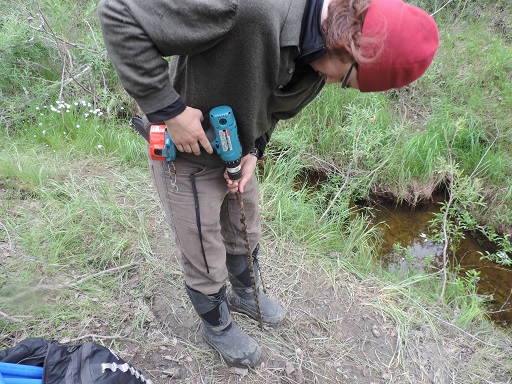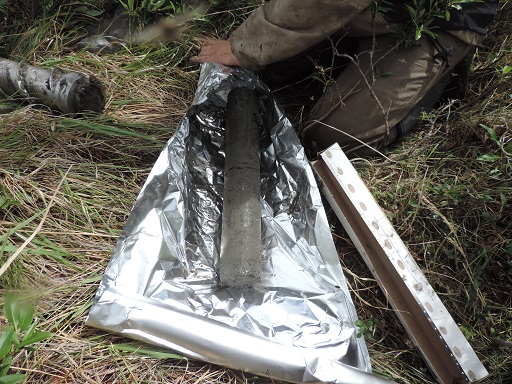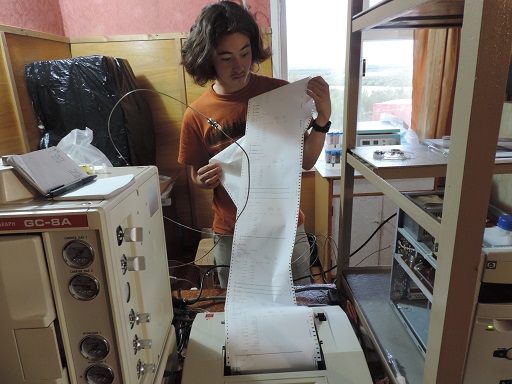Since the arctic is underlain by a layer of permafrost, soil that remains frozen year-round, water does not penetrate far into the ground from the surface. However, the thawed layer of soil is getting deeper every year as a consequence of climate change, referred to as active layer deepening. Water can flow through this soil, and as the active layer grows we expect to see more water in the arctic flowing through previously frozen soils and interacting with previously permafrost-locked nutrients as groundwater.
In my project, I examined the water in the soils, referred to as pore water, near to our Y4 stream channel. I inserted small wells to directly collect water, but I also took soil cores from the same sites. I soaked critical parts of these cores in water, as a method of examining what the water will pick up when flowing through different depths. Some of my sites had thawed only to a very shallow depth, but some were much deeper. All of these samples contain bacteria who are busily munching away on whatever carbon is available to them.
With my experiment, I’ll see if there are differences in how readily available the carbon is at different depths in these soils. As active layers deepen, the deep soils that were previously only thawed for a brief period of time will spend more time unfrozen, meaning more water will flow through them and into the watershed. Ultimately, my study gives us a better understanding of our current arctic groundwater, and what it could introduce to the ecosystem in the future.






